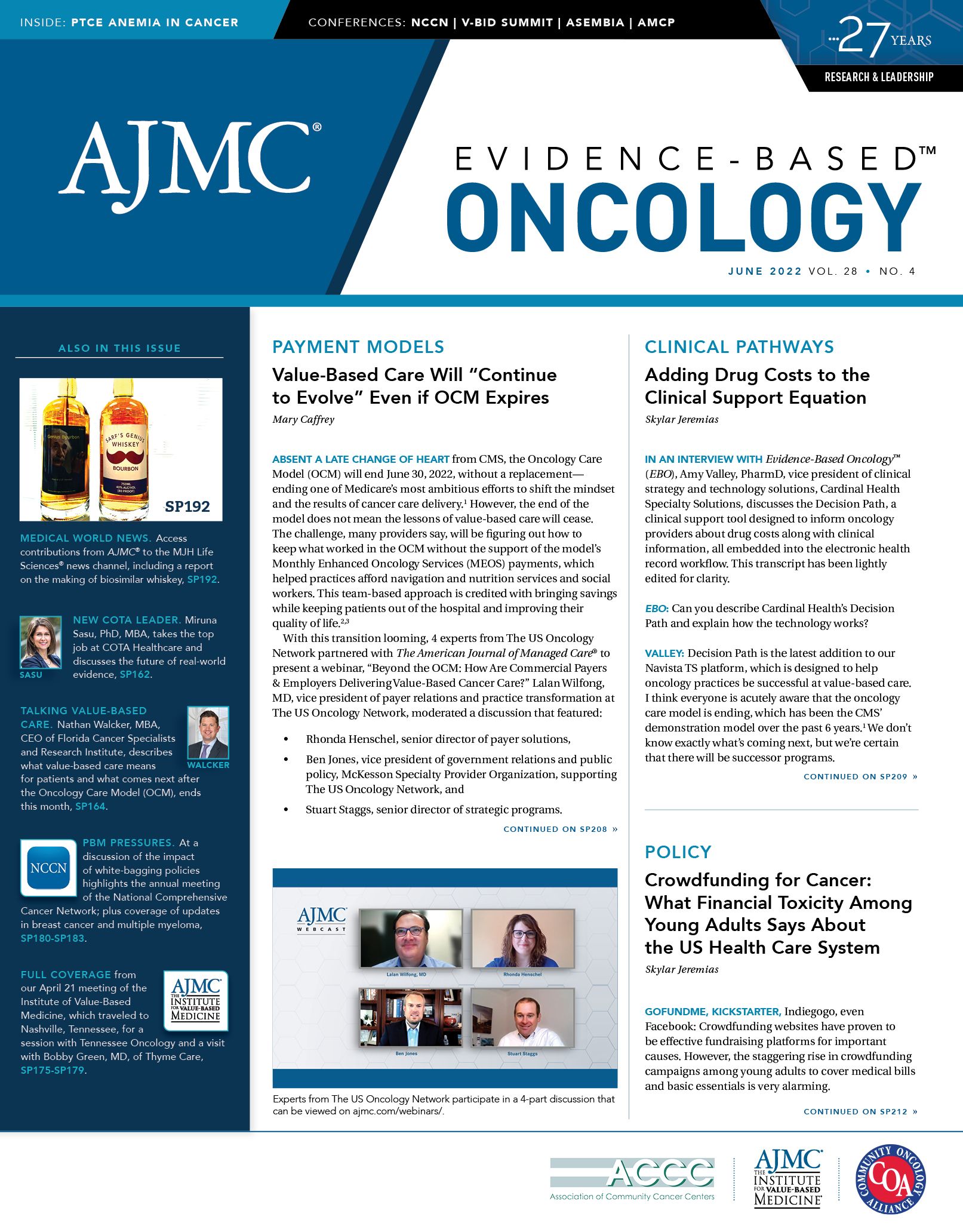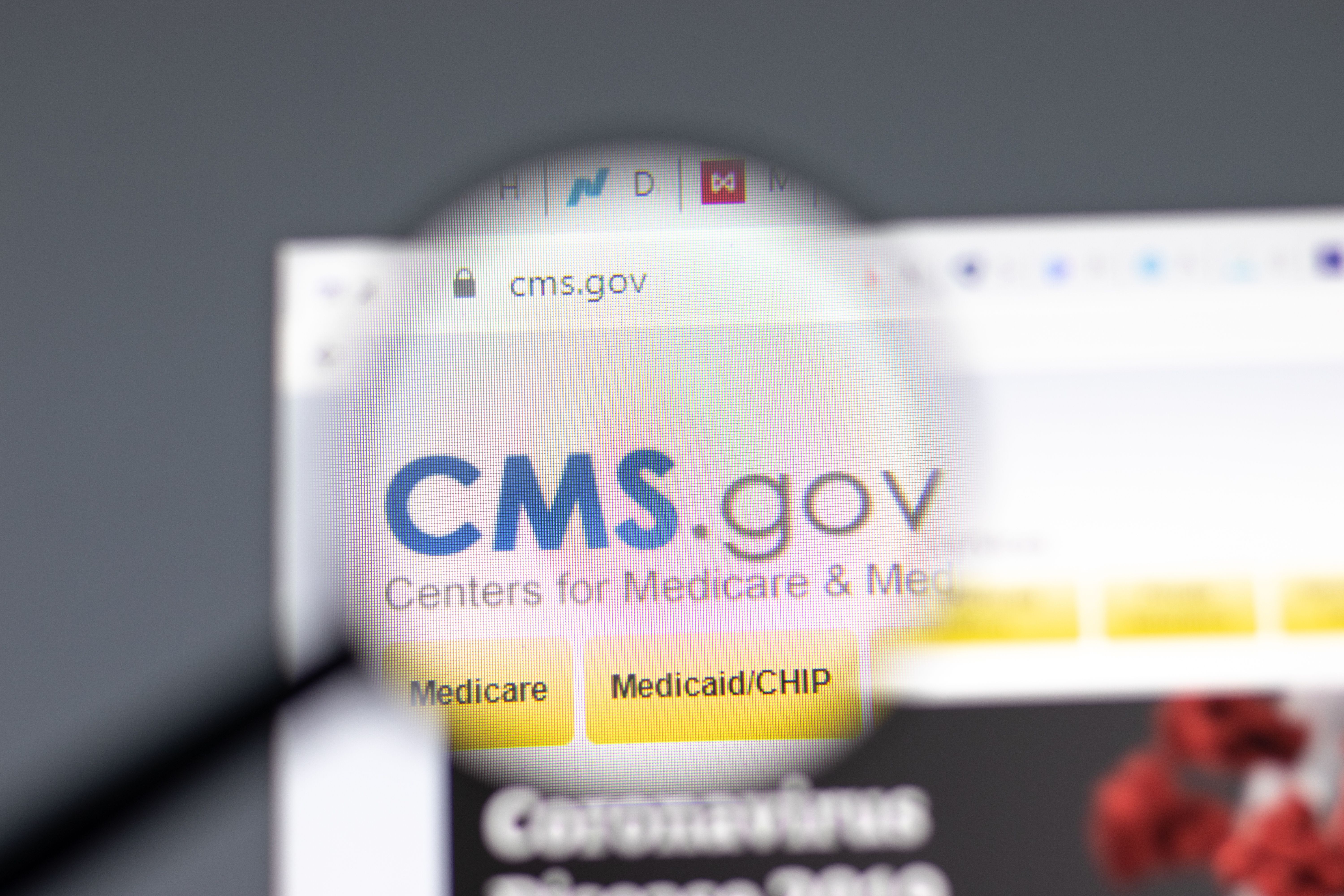Publication
Article
Evidence-Based Oncology
Thyme Care: A Human Touch in Cancer Care, Guided by Technology
Author(s):
Oncologist and health tech veteran Bobby Green, MD, who practiced for 17 years in Florida and was previously with Flatiron, is now Thyme Care’s president and chief medical officer. He has relocated to Nashville, Tennessee, to launch Thyme Care.
Cancer care navigation is not a new, unproven idea. The value of pairing a patient diagnosed with cancer with someone who knows the system—who can schedule appointments, warn about effects from medications, or connect a family with counseling—was first demonstrated in the 1990s when Harold P. Freeman, MD, created a program at Harlem Hospital in New York to help poor, mostly minority patients with follow-up care.1
Patients in the program had remarkably improved outcomes compared with similar patients at the same hospital who lacked assistance. For those receiving navigation, the 5-year survival rate nearly doubled, from 39% to 70%.
In multiple studies completed since that time, results have confirmed Freeman’s findings: Cancer care navigation can improve patient experience and outcomes, and even reduce costs.2-4 Unfortunately, despite the evidence, navigation is not universal.
The founders of Thyme Care knew this. Over the past decade, as this group of oncologists and health technology leaders were busy with other successful startups—notably Flatiron Health—they heard from friends who were bewildered by the task of guiding a loved one through cancer treatment. The idea that not everyone knows a friend in the cancer field begged for a solution, and in 2020, the founders launched a company to close the navigation gap.5
Oncologist and health tech veteran Bobby Green, MD, who practiced for 17 years in West Palm Beach, Florida, and was previously with Flatiron, is now Thyme Care’s president and chief medical officer. He has relocated to Nashville, Tennessee, where Thyme Care is among the city’s health tech startups—and nestled among the investment funds that focus on these ventures. Nashville-based funds are among those that helped Thyme Care raise $22 million in October 2021.6
During an interview at the company’s office, Green explained that Thyme Care doesn’t try to replace the one-on-one relationship a patient develops with a cancer care navigator. “Especially with cancer, there’s a human touch component, which you just can’t replace with technology,” he said. “And, there’s complexity to things that technology will never be able to completely solve for.”
Giving people with cancer an app and expecting them to navigate their cancer experience will not work. But pairing navigators with technology can make the process more efficient. This is how Thyme Care hopes to bring care navigation to everyone, at scale—by using technology to figure out who needs services on which day, and by deploying personnel precisely where they are needed.
In a typical practice, “you might have a navigator who 4 days a week is really, really busy—and 1 day a week, they’re not,” Green explained. Without technology, there’s no way to leverage that person’s time effectively. In a virtual model, “if they’re really busy with a practice 5 days a week, they can focus on that practice. But if there’s downtime, they can help patients in another practice. The advantages of both a virtual model and tech-enabled model is that it allows you to allocate resources in a more efficient way.”
During the interview, Green said data scientists in the next room were fine-tuning Thyme Care’s “acuity scores,” which assess each patient’s risk of something going wrong—such as a bad symptom or a trip to the emergency department (ED). The key is to not only to predict these bad events, but also when making contact will make a difference.
“How do you identify the people who are most at risk of bad things happening, but then also be cognizant of when your interventions are going to be able to help—because it doesn’t do the patient any good, and it’s not an efficient use of resources for us to be trying to make interventions that are not going to work,” Green said.
“So, how do you identify people who are likely to go to the ED, for example, but also [identify] people [for whom] you believe you have an intervention that will prevent them from going to the ED? Because no one is helped if we’re intervening with someone who’s about to go to the ED if they should be going to the ED.”
Technology also allows patient contacts to be customized. For example, if the patients can manage Zoom and want to include caregivers on a call, that’s fine. But those who use a landline will get a call that way, Green explained.
How Does It Work?
Thyme Care’s customers are health plans, but their collaborators will be practices. Navigation can involve connecting a newly diagnosed patient with the right oncologist, or it can mean offering emotional support, or it can mean managing the cascade of phone calls that starts with a single canceled appointment.
Green recreated a typical patient message: “My PET scan just got canceled. I’m supposed to see the oncologist the day after the PET scan. But since I didn’t have my PET scan, do I need to move the oncology appointment? And how do I make sure that the oncology appointment gets moved until after my PET scan is rescheduled, when my PET scan hasn’t been rescheduled yet? And by the way, they told me my PET scan was rescheduled because of my diabetes—does that mean I need to call my primary care doctor?”
“So, that kind of stuff happens all the time,” Green said.
Besides taking these burdens off the patient or a caregiver—such as an adult daughter who still has her own job—the Thyme Care staff handle tasks such as reporting patient symptoms through electronic means. Most importantly, they ensure that patients mention symptoms to their oncologist. The services are valuable to the practices, Green said, and they are also valuable to the health plan. “Ultimately we should be able to provide value in value-based care as well,” he noted.
Who Pays for Navigation?
Navigation has relied on individual practices or institutions having the resources to hire staff, with funding coming from a variety of sources, including short-term grants. There is no requirement for Medicare to fund navigators, although alternative payment models or those that reimburse providers for chronic care management have been used for this purpose.7 Over the past 6 years, many practices that took part in the Oncology Care Model (OCM), supported navigation services with Monthly Enhanced Oncology Services (MEOS) payments from CMS. Some oncologists have expressed concern that smaller practices will have trouble maintaining navigator services when MEOS payments cease after June 30, 2022.
The future may bring more sustainability for cancer navigation if payers provide the revenue, based on the savings that navigation demonstrates. A 2017 study in Health Affairs found that the Oncology Medical Home and other patient navigation models were associated with lower costs in the last 90 days of life, compared with usual care: $3346 vs $5824, respectively, along with fewer hospitalizations in the last 30 days.2 Patient navigation, especially, was linked to fewer ED visits and increased hospice enrollment. A 2019 report called on the Center for Medicare and Medicaid Innovation to provide for sustainable navigation funding in future models, as a way of ensuring health equity.7
“It’s about trying to think about how to use technology to help people at scale,” Green said.
In September 2021, Thyme Care formed a partnership with Clover Health to deliver services to underserved Clover Medicare Advantage members in New Jersey.8 “The revenue comes from health plans. We don’t charge patients; we don’t charge providers,” Green said. Nonetheless, the Thyme Care model calls for a full collaboration—and aligning incentives. He has viewed these relationships from both the business side and in oncology practice, and he knows that provider engagement can suffer when a third party provides navigation. “Provider focus is really important,” Green stressed.
Does the end of the OCM create a need for Thyme Care? Yes, health plans are interested, even though there’s plenty about the OCM they’re ready to leave behind.
We’ve taken the position that we want to help build models that are very clinician-/oncologist-centric, and bring the tools and technology and the expertise to figure out what the right value-based care models are to align incentives between the health plan and the practice—and then bring the tech to enable them,” Green said.
“People are very motivated to try to improve the patient experience, to drive higher-value care, to prevent acute care events, to make sure that the therapies that people are getting are the highest-value therapies,” said Green. “And I think that’s a space where health plans and oncologists are very much aligned.”
References
1. Freeman HP. Patient navigation: a community based strategy to reduce cancer disparities. J Urban Health. 2006;83(2):139-141. doi:10.1007/s11524-006-9030-0
2. Murphy Colligan E, Ewald E, Ruiz S, Spafford M, Cross-Barnet C, Parashuram S. Innovative oncology care models improve end-of-life quality, reduce utilization and spending. Health Aff (Millwood). 2017;36(3):433-440. doi:10.1377/hlthaff.2016.1303
3. Dillon EC, Kim P, Li M, et al. Breast cancer navigation: using physician and patient surveys to explore nurse navigator program experiences. Clin J Oncol Nurs. 2021;25(5):579-586. doi:10.1188/21.CJON.579-586
4. Dixit N, Rugo H, Burke NJ. Navigating a path to equity in cancer care: the role of patient navigation. Am Soc Clin Oncol Educ Book. 2021;41:1-8. doi:10.1200/EDBK_100026
5. Thyme Care. Home page. Accessed May 14, 2022. https://www.thymecare.com/
6. Andreessen Horowitz leads $22M in funding for Thyme Care to improve patient outcomes, close gaps in health disparities and drive value-based cancer care. News release. BusinessWire; October 5, 2021. Accessed May 14, 2022. https://bwnews.pr/37JQXjE
7. Osundina F, Garfield K, Downder S. National Navigation Roundtable: patient navigation in cancer care: review of payment models for a sustainable future. Center for Health Law and Policy Innovation. 2019. Accessed May 14, 2022. https://chlpi.org/wp-content/uploads/2013/12/Patient-Navigation-in-Cancer-Care-Review-of-Payment-Models_FINAL.pdf
8. Thyme Care announces strategic partnership with Clover Health to support members navigating through their cancer journey. News release. BusinessWire; September 1, 2021. Accessed May 14, 2022. https://bwnews.pr/3l8UXgG


Nathan Walcker Discusses Value-Based Oncology Care Initiatives at FCS




